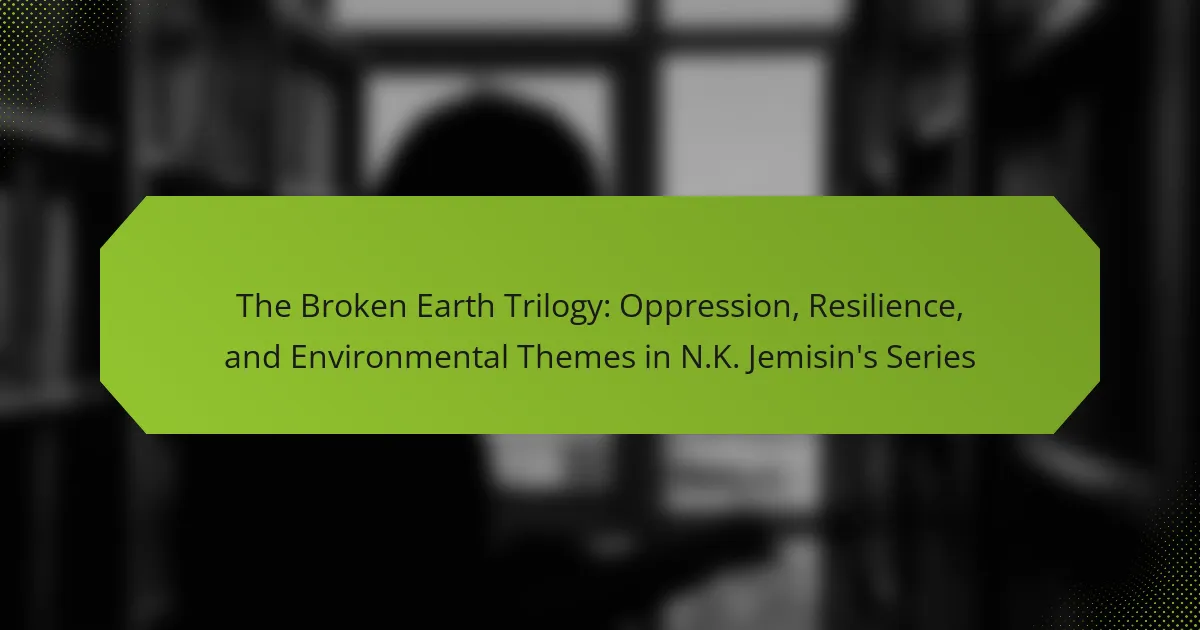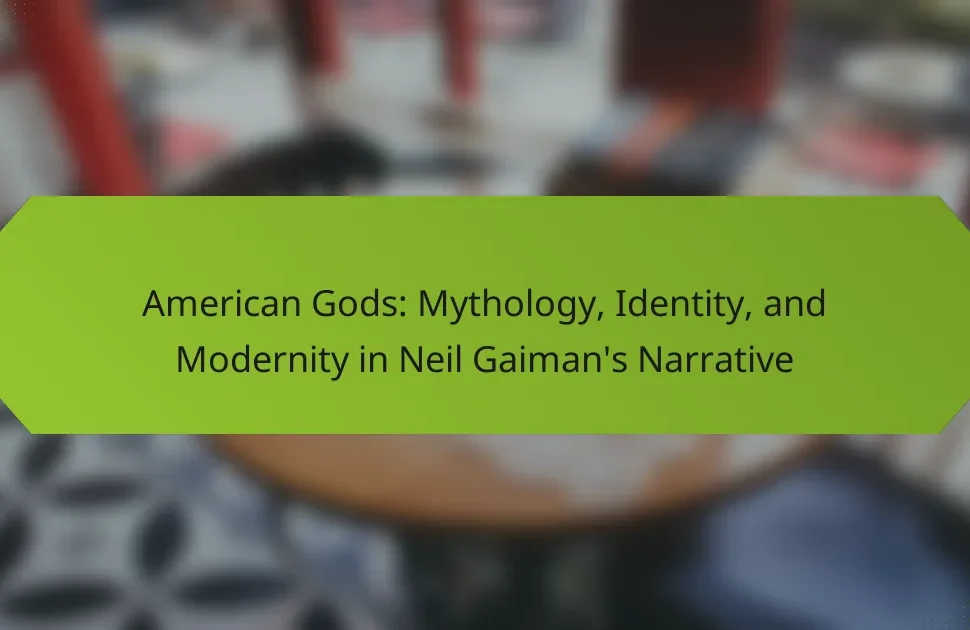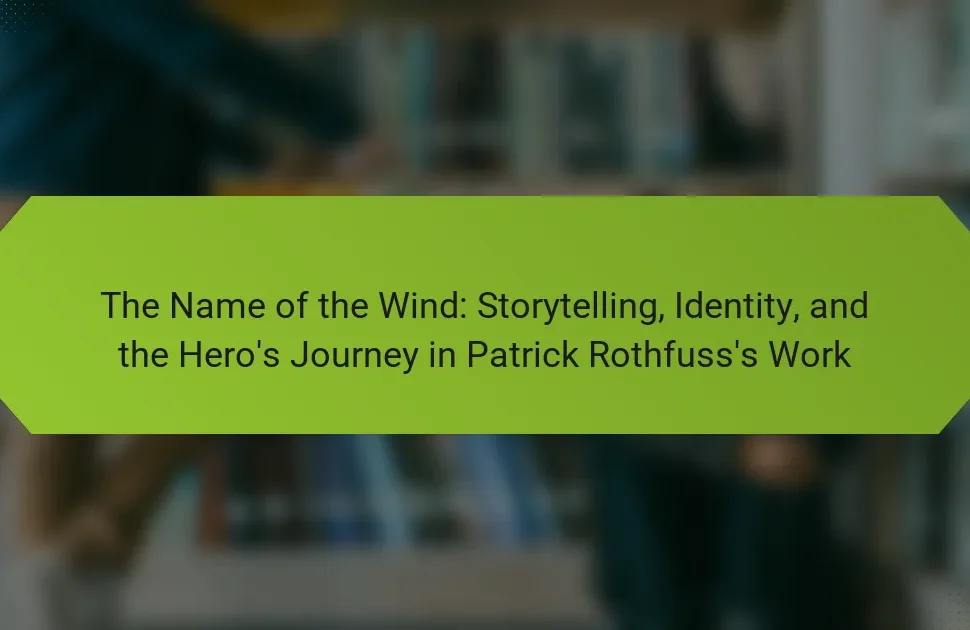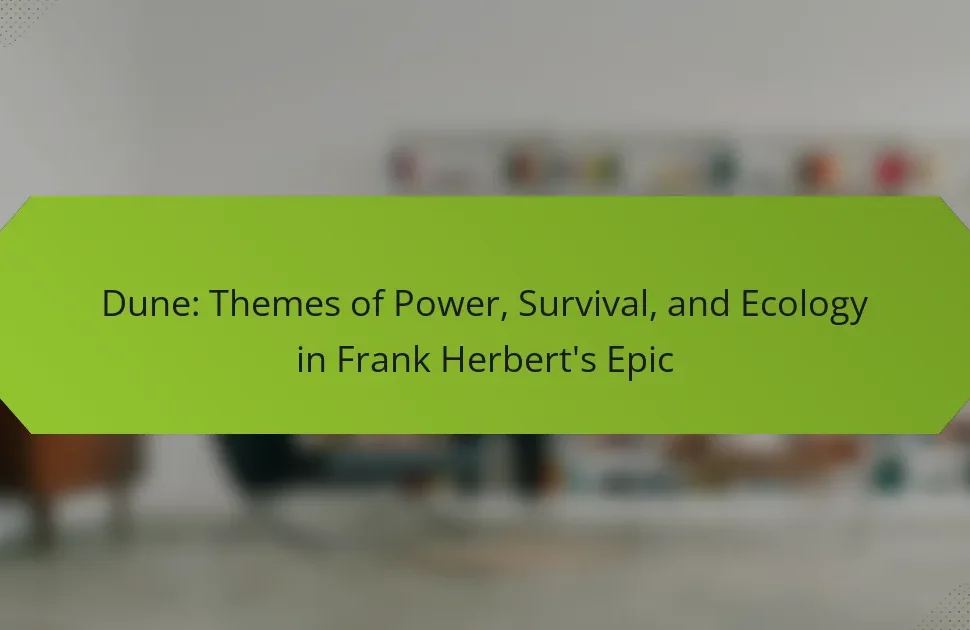The Broken Earth Trilogy by N.K. Jemisin addresses pressing themes of oppression and resilience within a backdrop of environmental challenges. It examines systemic inequality and societal marginalization, particularly through the lens of orogeny. The narrative highlights the impact of colonialism on individuals and the planet, showcasing characters’ struggles for survival. Additionally, it emphasizes the importance of community and collective action in confronting societal injustices and ecological degradation.
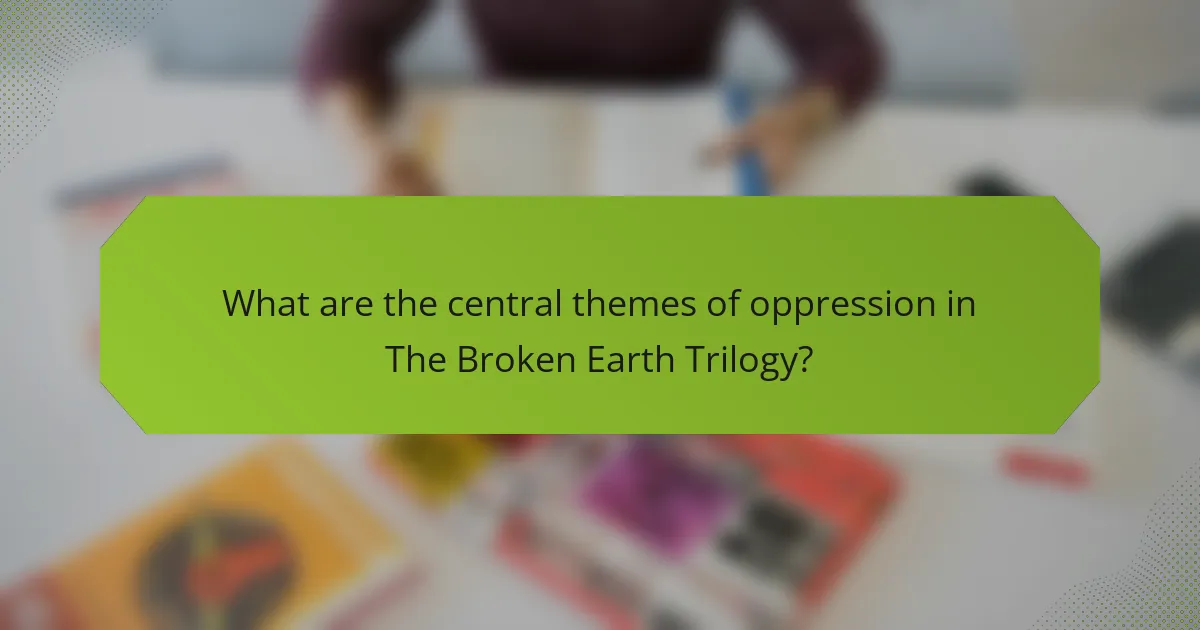
What are the central themes of oppression in The Broken Earth Trilogy?
The Broken Earth Trilogy explores themes of oppression through systemic inequality, environmental devastation, and the struggle for survival. Characters face societal marginalization based on their abilities, specifically orogeny, which is seen as a threat. This oppression manifests in harsh societal structures and environmental challenges, highlighting resilience in the face of adversity. Jemisin’s narrative emphasizes the impact of colonialism and exploitation on both individuals and the planet, creating a complex interplay between personal and environmental struggles. The trilogy ultimately advocates for understanding and healing, presenting a unique perspective on oppression and resilience.
How does systemic inequality manifest in Jemisin’s world?
Systemic inequality in Jemisin’s world manifests through societal hierarchies, oppression, and environmental exploitation. The ruling class exploits orogenes, people with the power to control geological forces, reflecting deep-rooted discrimination. This oppression leads to resilience among the oppressed, showcasing their struggle for agency and survival. Environmental themes highlight how systemic inequality exacerbates ecological disasters, impacting marginalized communities disproportionately.
What role does social hierarchy play in shaping characters’ experiences?
Social hierarchy significantly influences characters’ experiences in “The Broken Earth Trilogy.” The rigid class structure determines access to resources and societal power, shaping interactions and personal identities. For instance, orogenes face systemic discrimination, impacting their survival and relationships. This oppression contrasts with the resilience displayed by characters who navigate and challenge these hierarchies. The environmental themes further intertwine with social dynamics, as the world’s instability reflects societal fractures. Thus, social hierarchy is a critical lens through which to understand character development and thematic depth in Jemisin’s series.
Why is the concept of ‘otherness’ significant in the narrative?
The concept of ‘otherness’ is significant in the narrative as it highlights the experiences of marginalized groups. In “The Broken Earth Trilogy,” this theme underscores the oppression faced by orogenes, who are viewed as different and threatening. Their struggle for acceptance and identity reflects broader societal issues, emphasizing resilience in the face of systemic discrimination. This portrayal encourages readers to examine their perceptions of difference and the impact of societal norms on individual lives. Through this lens, Jemisin crafts a powerful commentary on the human condition and the necessity of empathy.
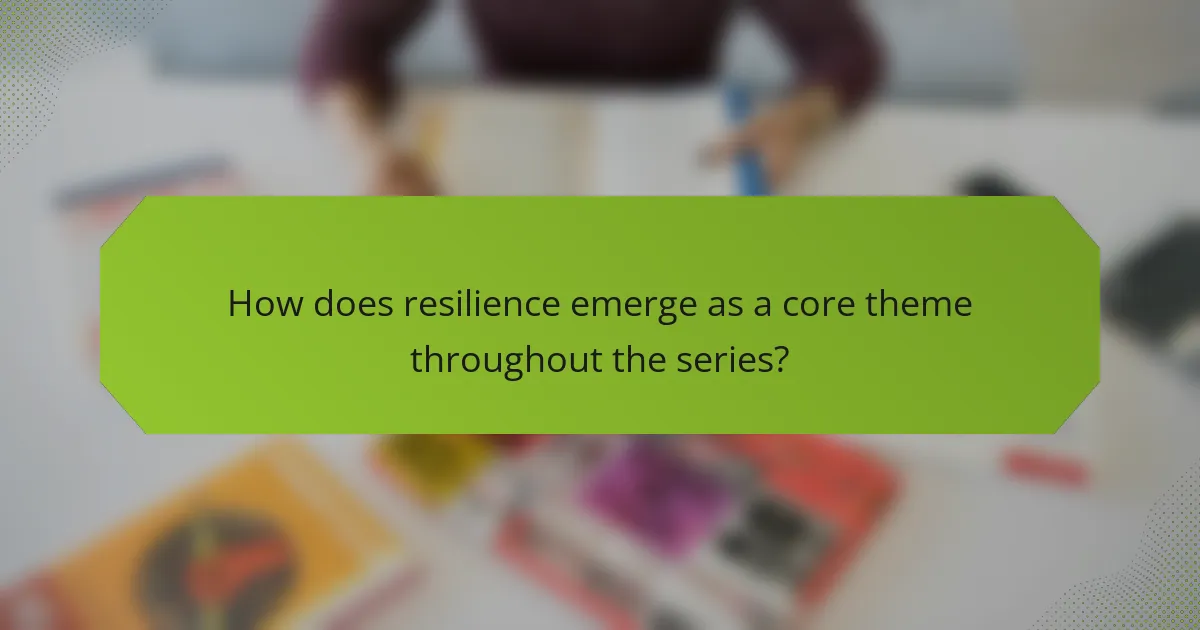
How does resilience emerge as a core theme throughout the series?
Resilience emerges as a core theme in The Broken Earth Trilogy through characters overcoming systemic oppression and environmental challenges. The narrative illustrates how individuals adapt and thrive despite adversity, highlighting the strength derived from community and shared struggle. Jemisin portrays resilience as an inherent quality, intertwined with identity and survival, emphasizing the transformative power of perseverance in the face of societal collapse. Through this lens, resilience becomes not just a personal trait but a collective force that shapes the characters’ journeys and the world they inhabit.
What strategies do characters use to cope with adversity?
Characters in “The Broken Earth Trilogy” employ various strategies to cope with adversity, including resilience, community support, and personal growth. Resilience manifests through their ability to endure and adapt to oppressive environments. Characters often rely on their communities, forming bonds that provide emotional and practical support. Personal growth emerges as they confront their fears and limitations, transforming adversity into a source of strength. These strategies highlight the themes of oppression and resilience throughout N.K. Jemisin’s series.
In what ways does community support foster resilience?
Community support fosters resilience by providing emotional strength, shared resources, and collective problem-solving. In “The Broken Earth Trilogy,” characters face oppression, but their interconnectedness enhances their ability to endure hardships. This dynamic illustrates how support networks empower individuals to confront environmental and societal challenges. Resilience emerges through collaboration, reinforcing the idea that community ties are vital for overcoming adversity.
How is personal growth portrayed in the face of societal challenges?
Personal growth in “The Broken Earth Trilogy” is depicted through characters overcoming societal oppression. N.K. Jemisin illustrates resilience against systemic challenges, showcasing characters who evolve despite environmental devastation. The trilogy emphasizes the strength found in community and self-acceptance, highlighting unique attributes like the orogenes’ ability to manipulate the earth. This growth reflects a rare blend of personal and collective struggle, ultimately presenting a narrative of hope and transformation in adversity.
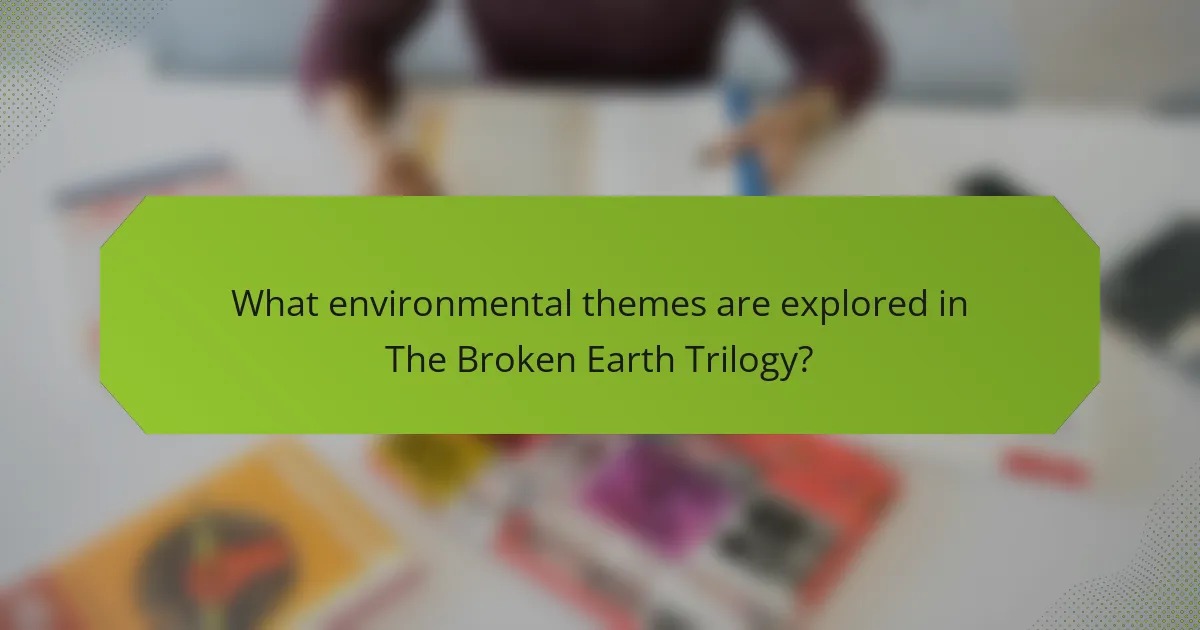
What environmental themes are explored in The Broken Earth Trilogy?
The Broken Earth Trilogy explores themes of environmental degradation, climate change, and the relationship between humans and their surroundings. The series highlights the consequences of oppression on both people and the earth, emphasizing resilience in the face of ecological collapse.
The trilogy depicts a world where geological instability shapes society, illustrating how environmental factors influence power dynamics. It showcases the struggle for survival amid harsh conditions, reflecting the impact of exploitation on natural resources.
Unique attributes include the use of orogeny, a form of earth manipulation, as a metaphor for environmental control and the struggle against oppressive systems. This connection between human agency and ecological balance underscores the importance of harmony with nature.
As a result, the narrative serves as a commentary on real-world environmental issues, urging readers to consider the consequences of neglecting the planet and the importance of sustainable practices.
How does the setting itself reflect ecological concerns?
The setting in “The Broken Earth Trilogy” vividly reflects ecological concerns through its portrayal of a world ravaged by climate change and geological instability. The oppressive environment mirrors societal oppression, emphasizing the relationship between people and their surroundings. The harsh landscapes symbolize the consequences of environmental neglect, highlighting themes of resilience and adaptation. The trilogy’s unique attribute lies in its integration of ecological themes into character struggles, illustrating how survival is intertwined with environmental stewardship. This complex interplay encourages readers to consider the impact of ecological degradation on both individuals and communities.
What parallels can be drawn between the characters’ struggles and real-world environmental issues?
The characters’ struggles in “The Broken Earth Trilogy” mirror real-world environmental issues, highlighting oppression and resilience. Both depict marginalized groups facing systemic challenges due to environmental degradation. For instance, the orogenes’ ability to manipulate earth reflects humanity’s struggle with climate change and resource exploitation. This parallel emphasizes the need for sustainable practices and social equity in addressing ecological crises. The series illustrates how oppression exacerbates environmental issues, urging readers to recognize the interconnectedness of social justice and ecological stewardship.
Why is the relationship between humanity and nature critical in the narrative?
The relationship between humanity and nature is critical in the narrative as it highlights themes of oppression and resilience. In “The Broken Earth Trilogy,” nature acts as both an adversary and a source of power. The characters’ struggles against environmental forces reflect societal issues and the consequences of exploitation. This dynamic emphasizes the interconnectedness of humanity and the environment, showcasing how survival depends on understanding and respecting natural systems. The trilogy ultimately advocates for a harmonious relationship with nature, illustrating its vital role in shaping human destiny.
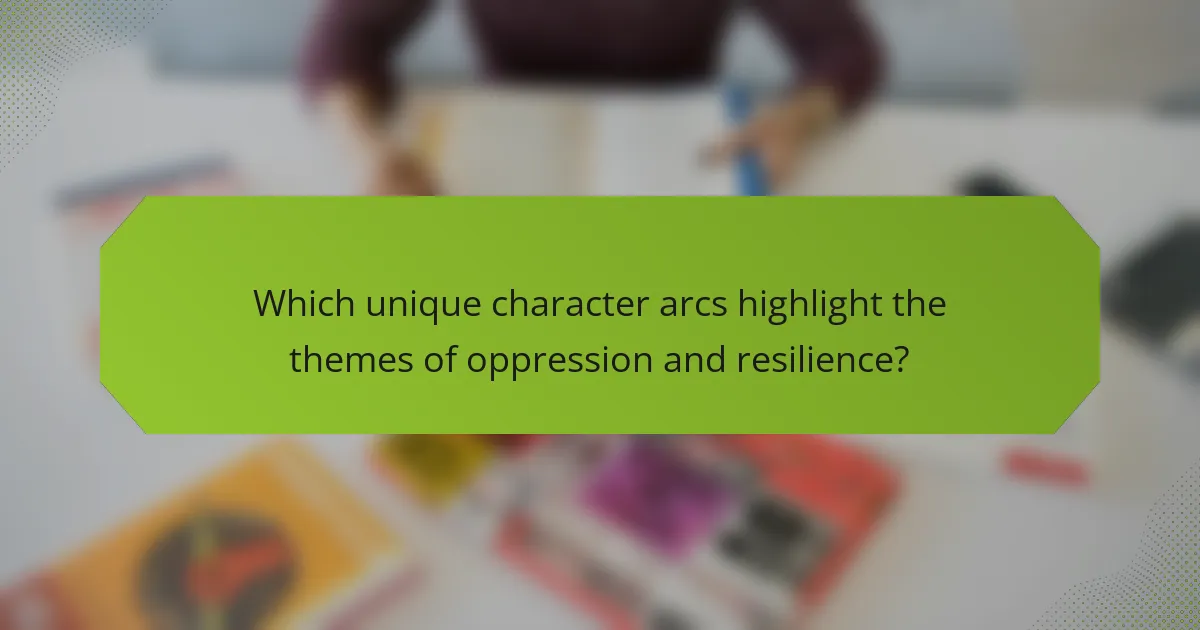
Which unique character arcs highlight the themes of oppression and resilience?
The Broken Earth Trilogy features unique character arcs that illustrate themes of oppression and resilience through the experiences of Essun, Syenite, and Nassun. Essun’s journey encapsulates the struggle against societal oppression, showcasing her resilience as she navigates a world that marginalizes her kind. Syenite embodies the fight against systemic control, demonstrating personal strength in her quest for autonomy. Nassun highlights generational trauma and the capacity for growth despite adversity, ultimately reflecting the trilogy’s core message of resilience amidst oppression.
How do the protagonists embody the struggle against oppression?
The protagonists in “The Broken Earth Trilogy” exemplify the struggle against oppression through their resilience and transformative journeys. Essun, Syenite, and Nassun navigate systemic injustices rooted in societal fears and prejudices against orogeny. Their experiences highlight the impact of oppression on identity and community.
Essun’s journey reflects a unique attribute of maternal strength, as she fights to protect her children amid societal collapse. Syenite embodies the rare trait of defiance against oppressive norms, challenging the expectations placed on orogenes. Nassun’s evolution showcases the root attribute of survival, emphasizing the importance of agency in overcoming adversity.
Through their interconnected stories, Jemisin illustrates the complexities of resistance, demonstrating that true empowerment often arises from collective struggle. The trilogy ultimately advocates for understanding and healing in the face of systemic oppression.
What differentiates the journey of each character in overcoming their challenges?
Each character’s journey in “The Broken Earth Trilogy” highlights unique paths of resilience against oppression. Essun confronts personal loss and societal rejection, showcasing the struggle for identity. Syenite faces systemic exploitation, emphasizing the fight for autonomy. Alabaster embodies the burden of knowledge, illustrating the sacrifice for change. These journeys reflect the complex interplay of personal and environmental challenges, revealing how each character navigates their circumstances to achieve empowerment.
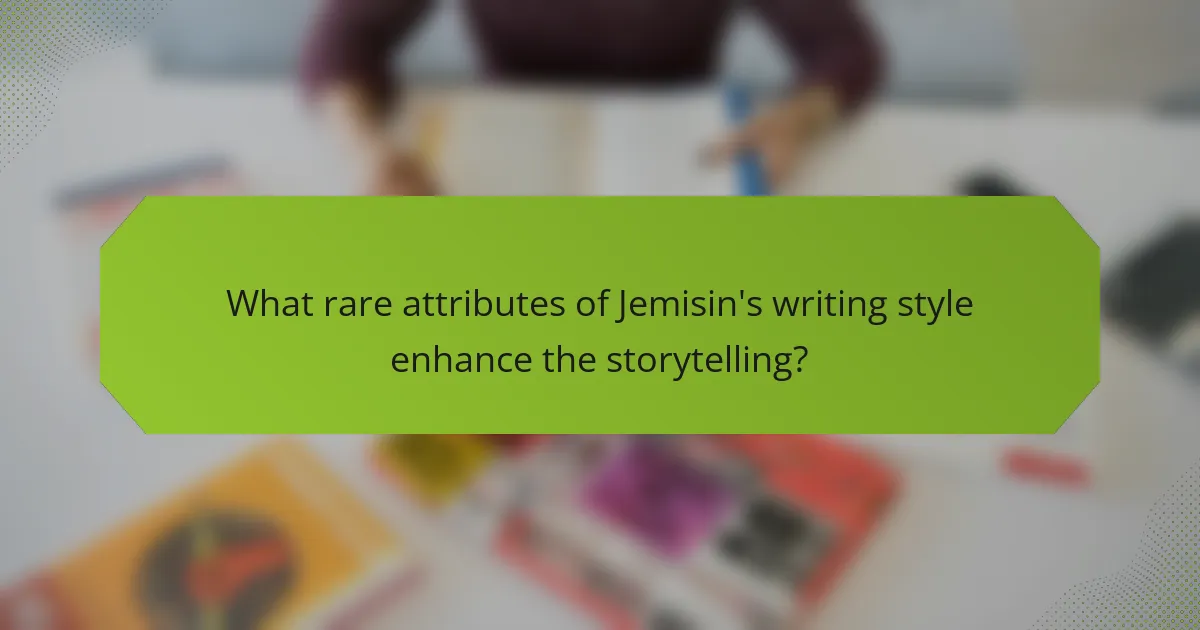
What rare attributes of Jemisin’s writing style enhance the storytelling?
Jemisin’s writing style in “The Broken Earth Trilogy” features rare attributes that significantly enhance storytelling. Her use of second-person perspective immerses readers deeply, fostering a unique connection to characters’ experiences. Additionally, her integration of complex world-building with intricate social hierarchies reflects real-world issues of oppression and resilience. Jemisin’s innovative narrative structure, which weaves multiple timelines and perspectives, creates a rich tapestry that challenges conventional storytelling. These elements combined elevate the emotional impact and thematic depth of the series.
How does the use of second-person narrative impact reader engagement?
The use of second-person narrative significantly enhances reader engagement by creating a direct connection between the text and the reader. This narrative style immerses readers in the characters’ experiences, making them feel personally involved in the story. In “The Broken Earth Trilogy,” N.K. Jemisin employs this technique to deepen the themes of oppression and resilience. By addressing readers directly, Jemisin fosters empathy and a sense of urgency regarding environmental issues and societal struggles depicted in her series. This engagement encourages readers to reflect on their own roles in the narrative’s broader themes.
What innovative narrative structures does Jemisin employ?
N.K. Jemisin employs innovative narrative structures in “The Broken Earth Trilogy” through the use of second-person perspective, fragmented timelines, and multiple viewpoints. These techniques enhance reader engagement and highlight themes of oppression and resilience. The second-person perspective immerses readers in the protagonist’s experiences, making emotional impacts more profound. Fragmented timelines reflect the disjointed nature of trauma and survival. Multiple viewpoints provide a comprehensive understanding of societal dynamics and environmental issues, enriching the narrative complexity.
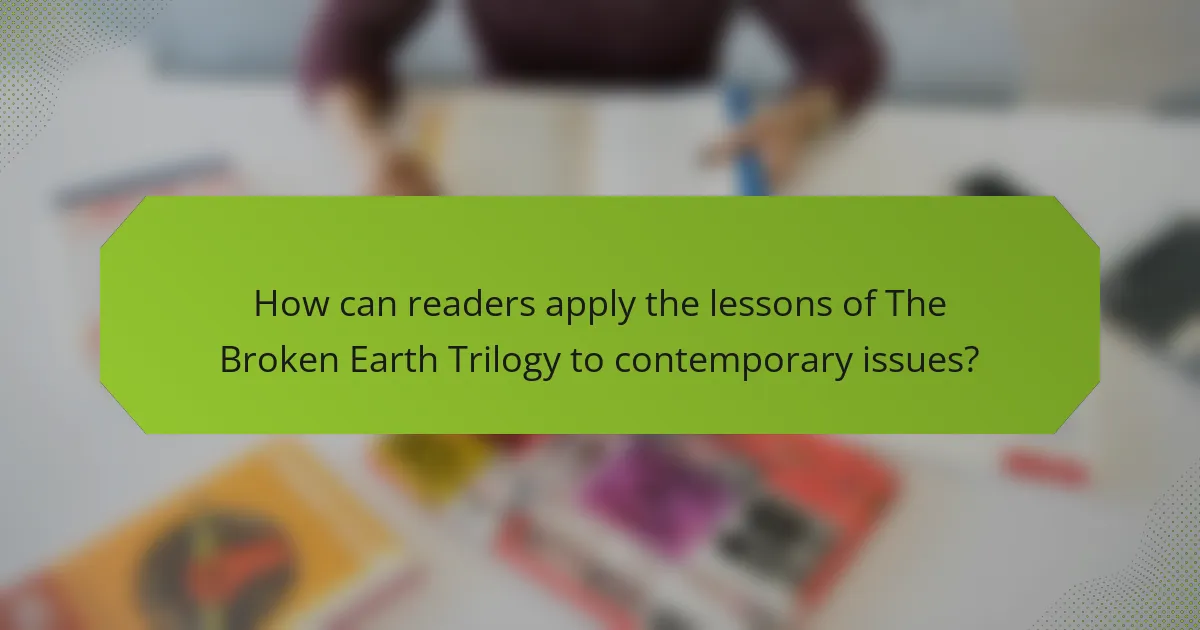
How can readers apply the lessons of The Broken Earth Trilogy to contemporary issues?
Readers can apply the lessons of The Broken Earth Trilogy to contemporary issues by recognizing parallels in oppression and resilience. The trilogy explores systemic injustices, mirroring real-world social struggles. For instance, the characters’ fight against discrimination and environmental degradation reflects ongoing global challenges. These narratives encourage empathy and activism, prompting readers to address inequalities and advocate for sustainable practices. Additionally, the themes of community and cooperation emphasize the importance of collective action in confronting societal issues. Engaging with these lessons fosters a deeper understanding of resilience in the face of adversity.
What best practices can be drawn from the characters’ experiences?
The characters’ experiences in “The Broken Earth Trilogy” highlight resilience, adaptability, and the importance of community. These themes illustrate how individuals can overcome systemic oppression through unity and personal strength. For example, Essun’s journey emphasizes the power of self-acceptance and the necessity of confronting societal challenges. Additionally, the series showcases environmental stewardship as a vital aspect of survival, urging readers to reflect on their relationship with nature. Ultimately, the narrative encourages proactive engagement in social justice and environmental issues, inspiring readers to act against oppression.
Which common mistakes should readers avoid when interpreting the themes?
Readers should avoid oversimplifying themes or ignoring character complexity. Misinterpretations often arise from viewing oppression solely as a background element rather than a driving force. Additionally, neglecting the interplay between resilience and environmental themes can lead to a skewed understanding. Readers should also refrain from projecting contemporary issues onto the narrative without considering its unique context. Lastly, overlooking the significance of world-building may result in missing critical thematic connections.
